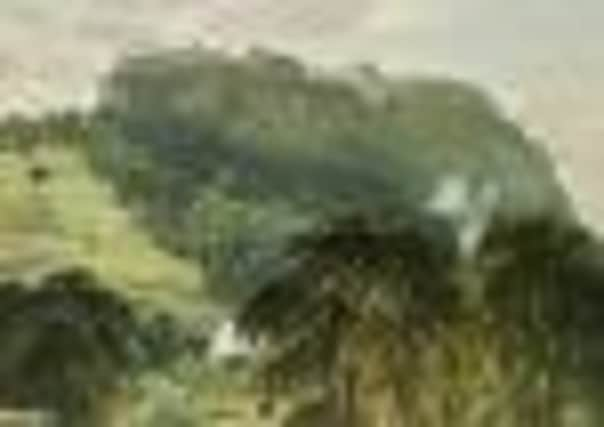Painting of Edinburgh Castle in 19th century set to fetch £150,000


But there’s no mistaking the Capital’s most iconic building, dramatically captured in a rediscovered Victorian painting by one of Britain’s most famous landscape artists.
Samuel Bough’s Edinburgh Castle from Princes Street, which experts believe is unlikely to have been seen in public before, will go under the hammer at Bonhams auction house later this month and is expected to fetch bids of up to £150,000.
Advertisement
Hide AdAdvertisement
Hide AdThe huge canvas, which is more than five feet high, was painted in the early 1860s by Carlisle-born Bough, who settled in Scotland in 1855.
Bough was known as wild and erratic while alive but his best works are now regarded as masterpieces. The artist was also a close friend of Robert Louis Stevenson, who described his paintings as “an act of dashing conduct like a capture of a fort in war”.
The image has been praised by historians, who said its portrait of the Castle and Princes Street Gardens presents the city at a time of important social change.
Dr Stana Nenadic, commissioner for East Queen Street Gardens and senior lecturer in social history at Edinburgh University, said: “It’s a very attractive image and it’s possible that the Gardens were still private at this time.
“Quite a lot of the Castle’s modern detail is missing – lots of the indentations and so on. That’s maybe because it has been considerably rebuilt.
“We know that Edinburgh Castle was rebuilt in the 1890s to make it more baronial- looking. And there’s now that big building on its right-hand side which is an army barracks built in the 19th century.”
Dr Nenadic said the painting’s depiction of Princes Street Gardens as wild and rural-looking indicated the area would have been considered the preserve of society’s well-off.
Advertisement
Hide AdAdvertisement
Hide AdShe said: “There’s a pastoral feel here which you would have seen in other big parks in Edinburgh at the time, such as Queen Street Gardens – which you can still see today.
“The kind of natural parkland in this image, with the forest underneath the Castle, is the style you would have seen round the great country estates.
“With the more formal style that emerges in the later 19th and early 20th centuries, the authorities are trying to control things. You would have had different types of people taking their leisure in the park – working-class people.
“It’s really a way of exercising control in a situation where many, many more people would have had time to take their leisure in an urban park.”
Bosses at Bonhams said the image had already attracted several expressions of interest at a preview show in London last month.
Chris Brickley, Bonhams’ head of pictures in Scotland, said: “Bough’s memory was legendary, particularly for cloud and atmospheric effects, and these are put to full use in Edinburgh Castle from Princes Street in the light summer sky, foliage, dappling sunlight and steam from the trains arriving at Waverley Station.”